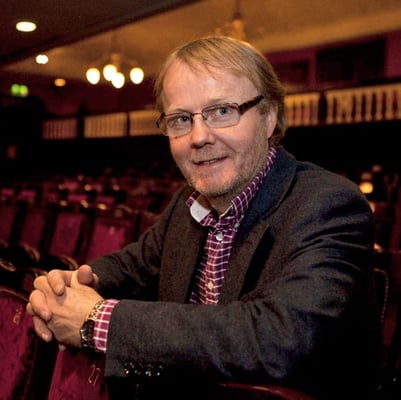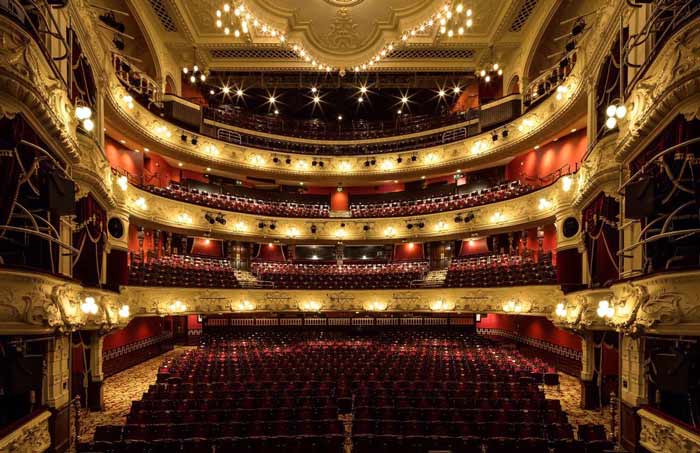Arts and Culture
Business Strategy
Article
The Culturephiles
e1eb7e18-61a6-4cc3-ad7a-1bd64b51b1a5
3 min
https://edge.sitecorecloud.io/tessiturane75c3-tessituraneee12-development-6640/media/Images/Discover-Images/Andrew-Blog/Archive/TRN-exterior-768x465.jpg?h=465&iar=0&w=768
In a quiet pause, a successful theatre exec demonstrates the key to great leadership.
The Most Important Thing

President & CEO, Tessitura
The Most Important Thing
2/12/2019
3 min
Philip was putting the finishing touches on a speech when I arrived at his office.
He jumped up from his desk to welcome me and apologized that he needed to finish up before showing me around. With his focus now returned to his computer, he was somehow chatting and reading and typing all at once.
I realized that I was experiencing a day in the life of a busy theatre executive.

Philip Bernays, Chief Executive, Theatre Royal Newcastle
Philip Bernays is the Chief Executive of the Theatre Royal in Newcastle, England. He’s held the job for more than a decade — a time in which the Theatre has been acclaimed as one of the best in England.
“I’m giving some remarks to a number of groups over the next few days to promote our opening of Macbeth,” Philip explained as he typed a bit more.
Writing complete, he searched his desk for a thumb drive, printed out his speech, grabbed his blazer, and continued chatting as he went, on such topics as:
- Details of their upcoming Macbeth, to
- Their 1899 production of Macbeth that had been followed by a devastating building fire, to
- A short rumination on the celebrated architect who built the theatre a new interior after the fire, to
- The careful 2011 building restoration that Philip oversaw, to
- A gentle reminder (from a Londoner no less) that great theatre does and must exist outside the capital city
All of that in about three minutes. And I left out some stuff. None of it was frenetic, but those three minutes quickly revealed some of the countless individual strands that make up the tapestry of theatre leadership.
Speech printed, jacket on, Philip ushered me out of his office. “Shall we have a look around?”
I smiled, knowing what was in store.
Runaway Train Tour
If you’ve never had a whirlwind, expertly-led, runaway train-style backstage tour of an historic theatre, I cannot recommend it enough. I’ve been lucky enough to have dozens over the years, and it is just my favorite thing.
The runaway train backstage tour always goes something like this:
…down a narrow flights of stairs, unexpected right turn, past the wall of wigs — whoops, duck under that pipe in the ceiling — hard left, just miss the rack of soldier costumes, up a half flight of stairs to — nowhere, apparently — and then back down another half a flight of stairs, through the costume shop, bolts of cloth, tulle, hi Betty, hi Jamie, look out for the — was that a shelf of severed heads?? Back out to another narrow hallway, COMING THROUGH! Squish up against the wall to make way for the two guys with the rolled up carpet, hi Bill, hi George, up more stairs, faded production photos lining the walls — is that a picture of Patrick Stewart with hair? No time to stop, zoom through the Green Room, stale coffee, lone actor curled up on a sofa ignoring you, back along the dressing rooms, to the scene shop, noise, sawdust, paint, hey Sam, hi Alex, around an inexplicable bend, hey there Johnny, mind if we pop up onto — and then — BOOM.
You are on the stage.
The Pause
All throughout this scramble, Philip’s continuous narration was affable. The peculiarities of the old building, the careful restoration decisions, the unique talents of the various staff, the push and pull of serving audiences, working with producers, navigating city politics, and managing hundreds of people. More and more unique threads, a million little details.
And yet, when we emerged from the labyrinth and stepped out into the wide open expanse of the empty stage, Philip’s narration paused. In fact, he paused long enough that I nearly broke the silence. But then he looked out, and with quiet devotion said:
“And here is our beautiful theatre.”

Theatre Royal Newcastle. Photo by Graeme Peacock.
I turned and looked. It filled my entire field of vision. Gold. Gilt. Chandeliers. Warm light softening the intricate plaster work. Gently curving rows of seats in rich red velvet. I could nearly feel the 175 years of ovations. Philip’s reverence made perfect sense.
And his pause. That pause. That pause made clear that the insane complexity of his job was actually very simple. He loved this place. That love is what tied all those million little threads together so successfully. I wish you could have heard the pause. I wish you could have heard the way he said it: (pause) “And here is our beautiful theatre.”
Like a seasoned captain introducing his beloved ship.
To be a truly successful leader, you must feel an unwavering love for your ship.
That is the most important thing.
Cultivate it. Listen for it. That love will lead you through calm seas and rough.
I’ve met many executives in my travels. Some talk about money. Some talk about problems. Some talk about themselves. The most successful ones are like Philip: in as many words, they talk about love.
“And here is our beautiful theatre,” he said quietly after a long pause.
In that pause I understood leadership.
Top photo by Graeme Peacock.
Topics
Arts & Culture
/Business Strategy
